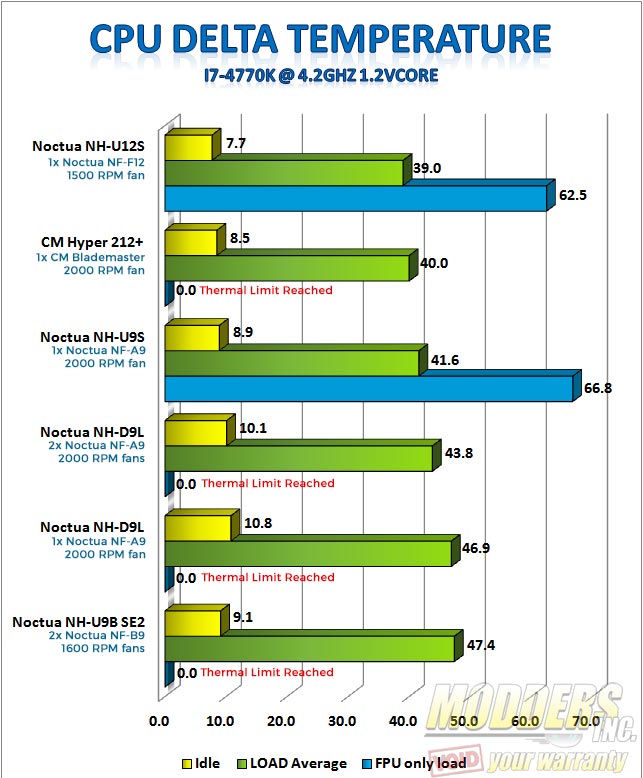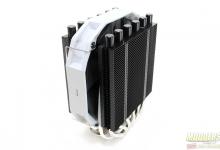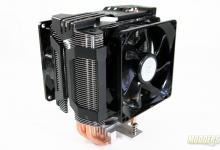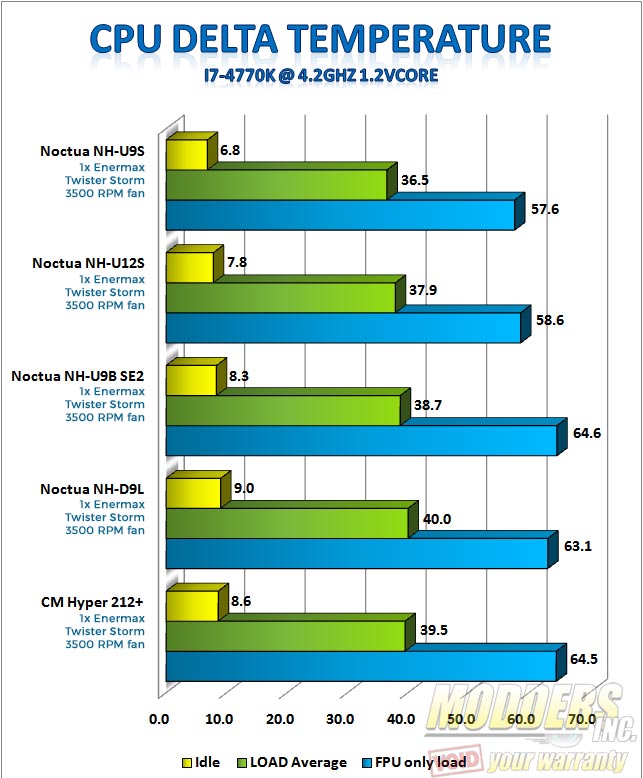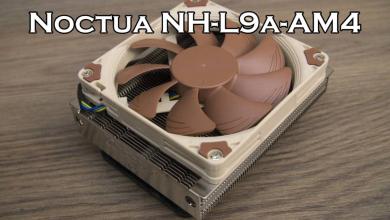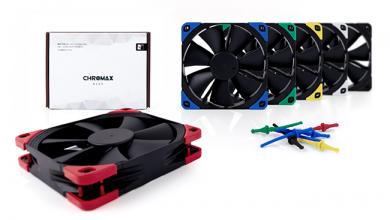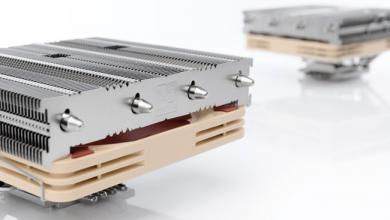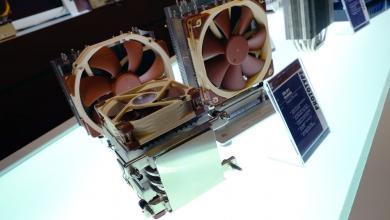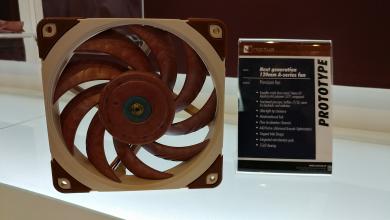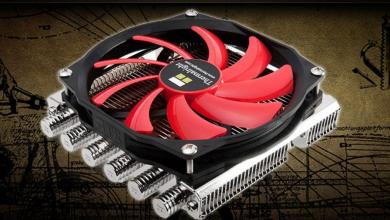Noctua NH-D9L CPU Cooler Review: The Mini NH-D15
Test System and Benchmark Results of the Noctua NH-D9L
Ambient temperature monitored at case intake and temperature Delta was used. All case and heat sink fans were benchmarked with fan control settings disabled and running at 100% unless otherwise specified. Intel integrated video is utilized to eliminate additional ambient heat source from discrete graphics cards. Temperatures are averaged (last minute) from individual core temperature results monitored by AIDA64 after 15 minutes. FPU load average is used to simulate worst case scenario load levels similar to Intel Burn Test or OCCT, results marked “0″ means thermal limit was reached and the CPU was throttled and thus the results were discarded. Stock settings have all power saving features enabled in the motherboard with Vcore set static to 1.1V and set to “Balanced” in the OS. Overclocked settings have Vcore voltage manually set to 1.2V at 4.2GHz with EIST disabled. All tests were taken at least three times to get the final result. Note that performance results on this setup are not directly comparable with any benchmarks from previous reviews as the UEFI BIOS on the motherboard has been updated and now has a much tighter control on the Vcore voltage. Since it is an ASUS motherboard, it engages all cores when it turbos so temperature will be higher compared to other Z87 motherboards that do not by default. As of January 2014, Modders-Inc will use Enermax Twister Storm 120mm 3500 RPM fan(s) for direct apples-to-apples heatsink performance comparison. An American Recording Technologies SPL-8810 was used for noise level measurement in dBA, 20CM away from the center fan intake.
| Processor | Intel Core i7-4770K (Retail) |
| Motherboard | ASUS Maximus VI Gene Z87 Motherboard (1603 BIOS) |
| Memory | Mushkin Stealth 1600MHz DDR3 |
| Drive | OCZ Agility 4 256GB SSD |
| Video Card | Intel Integrated Graphics |
| Thermal Compound | Noctua NT-H1 |
| Case | DimasTech Mini v1 |
| Power Supply | Corsair HX850W |
| Operating System | Windows 7 x64 Pro |
| Fans(s) |
|
| Comparison Heatsinks | Noctua NH-D9L | Noctua NH-U9S |
Noctua NH-U9B SE2 | Cooler Master Hyper 212+ | Noctua NH-U12S |
| Fan Size (mm) | 1×92 | 1×92 | 2×92 | 1×120 | 1×120 |
| Max fan RPM | 2000 | 2000 | 1600 | 2000 | 1500 |
| PWM | YES | YES | NO | YES | YES |
| Fan Bearing Type | SSO2 | SSO2 | SSO | Sleeve | SSO2 |
| SLIM | YES* | YES* | NO | YES | YES |
| Direct-Heatpipe | NO | NO | NO | YES | NO |
| Heatpipe Thickness (mm) | 6 | 6 | 6 | 6 | 6 |
| Heatpipe Count | 4 | 5 | 4 | 4 | 5 |
| Price (in USD) | 49.90 | 54.90 | 59.99 | 29.99 | 69.99 |
Benchmarks:
Results marked “0″ means thermal limit was reached and the CPU was throttled.
Standardized Fan Test:
Sound Level Comparison @ Max Default Fan RPM:
Performance Summary:
The Noctua NH-D9L performed very well considering its size being the smallest heatsink in the set. Performance level is very similar to the extremely popular and larger CM Hyper 212+ and dual NH-U9B SE2 in the standardized overclocked test. It placed last in the stock benchmarks but handled overclocks better than the dual-fan NH-U9B SE2 once additional voltage is introduced and the CPU was overclocked. Adding a second NF-A9 fan to the NH-D9L pushed performance closer to the NH-U9S. In terms of noise level, the NF-A9 fan on the NH-D9L is also the quietest and even with the added fan, it is still quieter than the previous generation NH-U9B SE2 which is running at a lower RPM.

